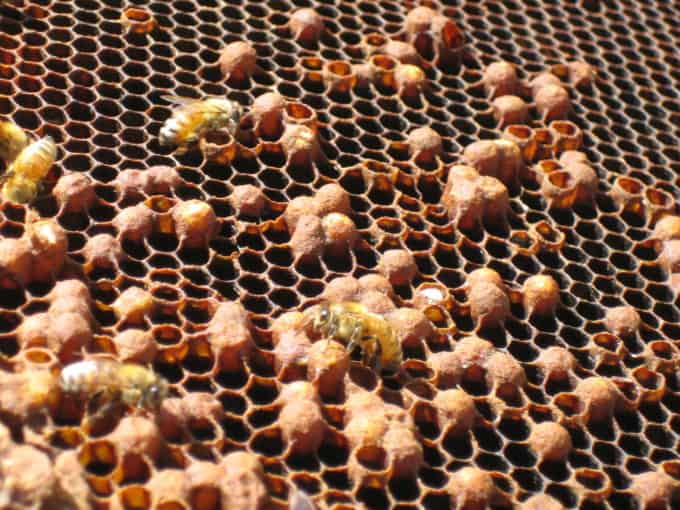When you dissect thousands of bees, it is important to remember that exploration is the process and discovery is the goal. Pictured below is the stimulated ovaries of a worker that I discovered while performing an autopsy on a honey bee. In beekeeping terms we would call this a “laying worker”.


During the period of time from queenlessness to colony death workers may sometimes begin to lay eggs. A laying worker occurs when the ovaries of worker bees are stimulated. The ovaries develop allowing her to lay eggs. Normally ovary development in workers is suppressed by the presence of uncapped brood.
Sampling and assessing honey bee hives is another way of turning exploration into discovery… I have seen the chaos that laying workers can create in the hive and know that their presence is in response to the panic felt throughout the hive when a colony goes queenless…
Because worker bees don’t mate, the eggs they lay are unfertilized and all become drones (except in some very rare occasions). Exploring a frame like the one pictured below may lead to the discovery that there is a laying worker in the hive (Photo courtesy of Dennis vanEngelsdorp).
Further exploration of the frame may also lead you to discover that this laying worker has deposited multiple eggs in a single cell and laid them in all cell sizes (worker and drone).

If you were to look even closer you might also notice that the eggs aren’t centered at the bottom of the cell. This is because the abdomens of laying workers are too short to reach and center the egg to the bottom.
Brood pattern is another visual clue used to identify the absence or presence of a laying worker. Workers will lay eggs in a disorderly manner resulting in the formation of spotty brood patterns.
Seeing a hive in the field that has a laying worker in it and being able to dissect one to see what stimulated ovaries look like has been a very rewarding way for me to put pieces of the puzzle together. Being able to apply what I have seen in the lab with what I have seen in the field (or vice versa) is the way I learn best. I am looking forward to continuing to learn like this in California.